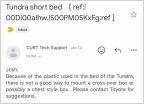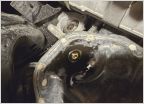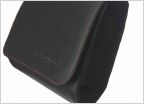-
Welcome to Tundras.com!
You are currently viewing as a guest! To get full-access, you need to register for a FREE account.
As a registered member, you’ll be able to:- Participate in all Tundra discussion topics
- Transfer over your build thread from a different forum to this one
- Communicate privately with other Tundra owners from around the world
- Post your own photos in our Members Gallery
- Access all special features of the site
Larger Tire Impact Question
Discussion in '3rd Gen Tundras (2022+)' started by TrueBlueMaxx, Feb 4, 2023.
Page 2 of 2
Page 2 of 2


 22 Short Bed UWS toolbox
22 Short Bed UWS toolbox Well this just happened
Well this just happened Has anyone found a way to replace the usb a ports to usb c?
Has anyone found a way to replace the usb a ports to usb c? 2023 Owner’s Manual Portfolio
2023 Owner’s Manual Portfolio Powerbank charging issues - 2023 SR5
Powerbank charging issues - 2023 SR5 Stripped T30 Bolt (Bed Rails)
Stripped T30 Bolt (Bed Rails)

















































































